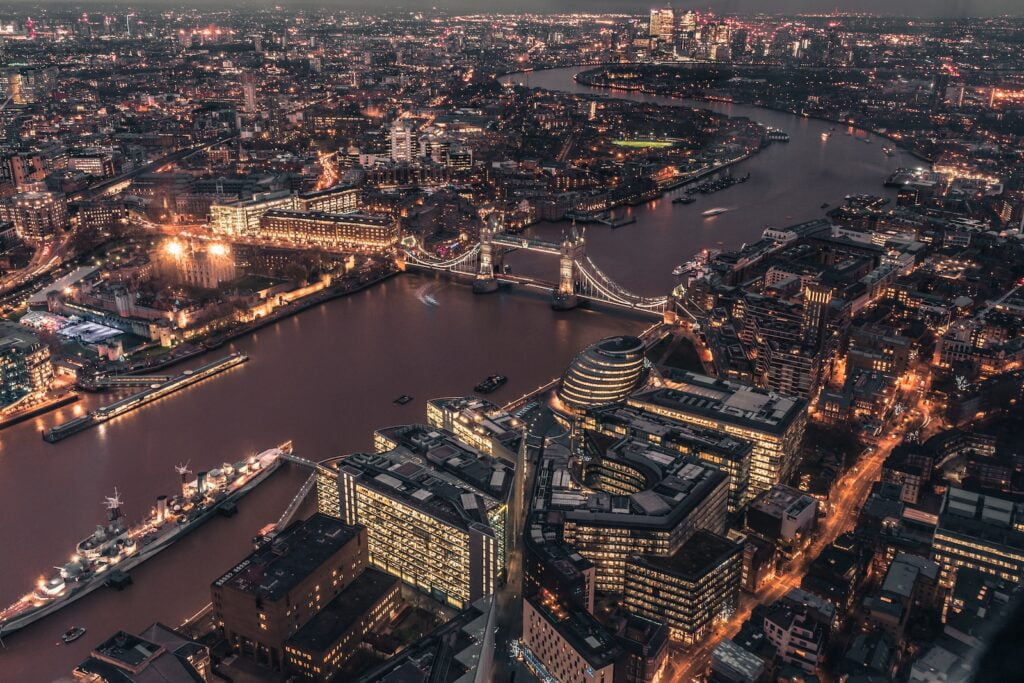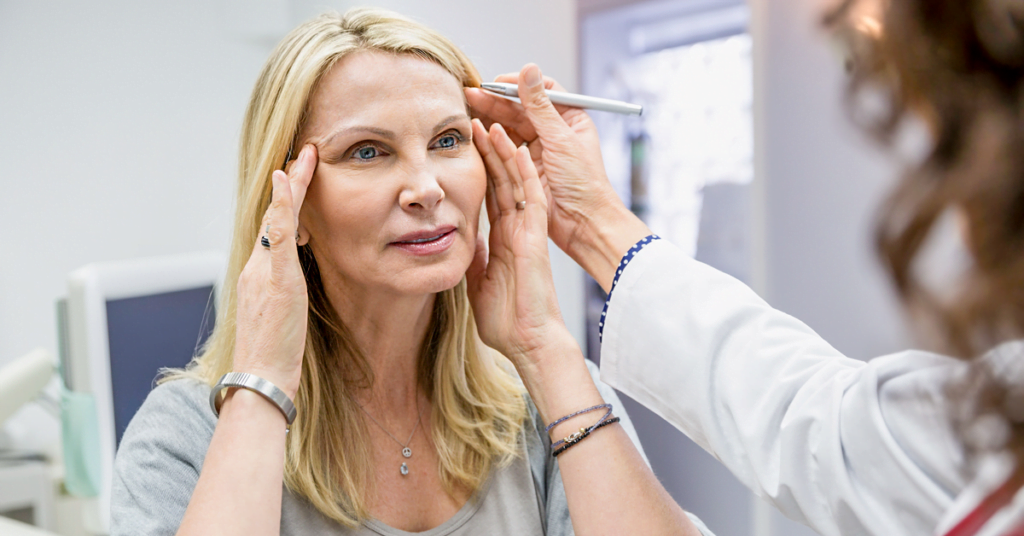Are you considering getting a facelift in the UK? If so, you might have many questions about this cosmetic procedure, such as what it involves, how much it costs, what are the risks and benefits, and how to choose the best surgeon and clinic. In this article, we will answer all these questions and more, based on the latest information and research. We will also compare the prices and quality of facelifts in different countries, and explain why Turkey, especially Antalya, is a more attractive alternative for this surgery. Read on to find out everything you need to know about facelifts in the UK and abroad.

Table of Contents
What is a Facelift and How Does it Work?
A facelift, also known as rhytidectomy, is a surgical procedure that aims to improve the appearance of the face and neck by removing excess skin, tightening the underlying muscles, and repositioning the fat and tissues. A facelift can reduce the signs of aging, such as sagging, wrinkles, jowls, and double chin, and give the face a more youthful and refreshed look.
There are different types of facelifts, depending on the extent and technique of the surgery. Some of the most common ones are:
- Full facelift: This is the most comprehensive type of facelift, which addresses the whole face and neck. It involves making incisions along the hairline, around the ears, and under the chin, and lifting and repositioning the skin, muscles, and fat. It can also be combined with other procedures, such as eyelid surgery, brow lift, or fat transfer, to enhance the results.
- Mini facelift: This is a less invasive type of facelift, which focuses on the lower part of the face, such as the cheeks, jawline, and mouth. It involves making smaller incisions around the ears and lifting and tightening the skin and muscles. It is suitable for people who have mild to moderate signs of aging and want a shorter recovery time.
- Mid facelift: This is a type of facelift that targets the middle part of the face, such as the cheeks, nose, and lower eyelids. It involves making incisions in the hairline and inside the mouth, and lifting and repositioning the fat and tissues. It can help restore the volume and contour of the cheeks and smooth out the nasolabial folds.
- Thread lift: This is a type of facelift that uses dissolvable threads to lift and support the skin and tissues. It involves inserting the threads under the skin with a needle and pulling them to create a lifting effect. It is a minimally invasive procedure that can be done under local anesthesia and has a shorter recovery time. However, the results are not as long-lasting or dramatic as a surgical facelift.
The type of facelift that is best for you depends on your goals, expectations, anatomy, and budget. You should consult with a qualified and experienced plastic surgeon who can assess your face and recommend the most suitable option for you.
What are the Benefits and Risks of a Facelift?
A facelift can have many benefits for your appearance and self-confidence, such as:
- Improving the shape and contour of your face and neck
- Reducing the sagging, wrinkles, and folds on your skin
- Enhancing the definition of your jawline and chin
- Restoring the volume and fullness of your cheeks and lips
- Making you look younger and more refreshed
However, like any surgery, a facelift also has some risks and complications, such as:
- Bleeding, infection, and scarring
- Nerve damage, numbness, and facial asymmetry
- Hematoma, seroma, and skin necrosis
- Poor wound healing and skin discoloration
- Unsatisfactory results and need for revision surgery
To minimize the risks and maximize the benefits of a facelift, you should follow the pre- and post-operative instructions of your surgeon, choose a reputable and accredited clinic, and have realistic expectations about the outcome.

How Much Does a Facelift Cost in the UK and Other Countries?
The cost of a facelift can vary widely depending on the type of facelift, the surgeon’s experience and reputation, the clinic’s location and facilities, and the additional procedures or treatments that are included. According to the British Association of Aesthetic Plastic Surgeons (BAAPS), the average cost of a facelift in the UK in 2020 was £6,718. However, this does not include the fees for anesthesia, hospital stay, medication, and aftercare, which can add up to several thousand pounds more.
If you are looking for a more affordable option, you might consider getting a facelift abroad, where the prices are generally lower due to the lower cost of living, labor, and taxes. However, you should also factor in the costs of travel, accommodation, insurance, and possible complications or revisions, which can increase the total expense. Moreover, you should research the quality and safety standards of the foreign clinics and surgeons, and make sure they are certified and accredited by reputable organizations.
To give you an idea of the price differences, here is a table that compares the average cost of a full facelift in the UK and some popular countries for medical tourism:
| Country | Average Cost of Full Facelift |
|---|---|
| UK | £6,718 |
| Turkey | £2,500 |
| Poland | £3,000 |
| Thailand | £4,000 |
| Mexico | £4,500 |
As you can see, Turkey offers the lowest price for a full facelift, followed by Poland, Thailand, and Mexico. However, price is not the only factor that you should consider when choosing a country for your facelift. You should also look at the quality, experience, and reputation of the clinics and surgeons, as well as the convenience, comfort, and safety of the destination.

Why Choose Turkey, Especially Antalya, for Your Facelift?
Turkey is one of the most popular destinations for cosmetic surgery in the world, attracting millions of medical tourists every year. There are many reasons why Turkey is a great choice for your facelift, such as:
- High-quality and affordable clinics and surgeons: Turkey has many modern and well-equipped clinics that offer a wide range of cosmetic procedures, including facelifts, at a fraction of the cost in the UK. Moreover, Turkey has many skilled and experienced plastic surgeons who are trained and certified by international organizations, such as the International Society of Aesthetic Plastic Surgery (ISAPS) or the European Board of Plastic, Reconstructive and Aesthetic Surgery (EBOPRAS).
- Easy and convenient travel and accommodation: Turkey is easily accessible from the UK, with many direct and cheap flights available throughout the year. The flight time is around 4 hours, which is relatively short compared to other countries. Moreover, Turkey has many options for accommodation, from luxury hotels to budget-friendly apartments, that cater to different tastes and budgets. You can also find many packages and deals that include your flight, accommodation, and surgery, which can save you time and money.
- Beautiful and diverse culture and nature: Turkey is a country that offers a rich and diverse culture and nature, which can make your trip more enjoyable and memorable. You can explore the historical and cultural sites, such as the Hagia Sophia, the Blue Mosque, or the Topkapi Palace, or enjoy the natural wonders, such as the Cappadocia, the Pamukkale, or the Mediterranean coast. You can also experience the delicious and healthy Turkish cuisine, the warm and hospitable Turkish people, and the vibrant and colorful Turkish markets and bazaars.

Among the many cities in Turkey that offer cosmetic surgery, Antalya is one of the most attractive and popular ones. Antalya is a city on the Mediterranean coast, known for its stunning beaches, resorts, and historical attractions. Antalya is also home to some of the best clinics and surgeons in Turkey, who specialize in facelifts and other cosmetic procedures. Some of the benefits of choosing Antalya for your facelift are:
- Enjoying the sun and sea: Antalya has a mild and sunny climate, with an average temperature of 18°C and more than 300 days of sunshine per year. You can relax and recover on the beautiful and clean beaches, swim in the clear and blue sea, or take a boat trip to the nearby islands and coves. Antalya also has many luxurious and comfortable resorts and spas, where you can pamper yourself with massages, therapies, and treatments.
- Visiting the historical and natural sites: Antalya has a rich and diverse history, dating back to the ancient times. You can visit the impressive and well-preserved ruins of the Roman, Byzantine, Seljuk, and Ottoman civilizations, such as the Aspendos Theatre, the Perge Ancient City, or the Hadrian’s Gate. You can also admire the natural beauty and diversity of Antalya, such as the Duden Waterfalls, the Koprulu Canyon, or the Olympos National Park.
- Saving money and time: Antalya offers some of the lowest prices for facelifts in Turkey, as well as in the world. You can save up to 70% compared to the UK, and still get high-quality and safe surgery. Moreover, Antalya has a fast and efficient airport, which is connected to many international destinations. You can easily find direct and cheap flights from the UK, and reach Antalya in less than 5 hours. You can also benefit from the free or discounted transfers and consultations that many clinics offer to their patients.

As you can see, Antalya is a perfect destination for your facelift, as it combines the best of both worlds: quality and affordability, beauty and culture, relaxation and adventure. You can have a life-changing surgery and a memorable holiday at the same time, and return home with a new and improved look and a smile on your face.
What is the Best Age to Have a Facelift?
There is no definitive answer to the question of what is the best age to have a facelift, as different people age differently and have different goals and expectations. However, some general factors that can influence the decision are:
- The degree and type of aging: Some people may develop more noticeable signs of aging, such as sagging, wrinkles, and loss of volume, than others, due to genetics, lifestyle, or environmental factors. Moreover, some people may have more concerns about certain areas of their face, such as the forehead, the eyes, or the mouth, than others. Depending on the degree and type of aging, some people may benefit more from a facelift than others, or may need a different type of facelift.
- The health and fitness level: A facelift is a major surgery that requires general anesthesia, incisions, and stitches. Therefore, it is important to be in good physical and mental health before undergoing the procedure. Some medical conditions, such as diabetes, high blood pressure, or heart disease, may increase the risk of complications or affect the healing process. Moreover, some habits, such as smoking, drinking, or sun exposure, may also impair the outcome or longevity of the facelift. Therefore, it is advisable to quit smoking, limit alcohol intake, and protect the skin from the sun before and after the surgery.
- The personal and professional situation: A facelift can have a significant impact on the personal and professional life of the patient, as it can change their appearance, self-confidence, and social interactions. Therefore, it is important to consider the timing and the motivation of the surgery, and how it fits with the patient’s goals and expectations. Some people may want to have a facelift to look younger and more attractive, to boost their career or relationship prospects, or to match their inner age and personality. Others may want to have a facelift to correct a deformity or injury, to restore their natural features, or to improve their quality of life. Whatever the reason, it is essential to have a clear and realistic vision of what the facelift can and cannot achieve, and to discuss it with the surgeon and the loved ones.
In general, most people who have a facelift are between 40 and 60 years old, as this is the age range when the signs of aging become more noticeable and bothersome, and when the skin and tissues still have enough elasticity and resilience to respond well to the surgery. However, some people may opt for a facelift earlier or later in life, depending on their individual circumstances and preferences. The best way to determine the best age to have a facelift is to consult with a qualified and experienced plastic surgeon, who can evaluate the face and recommend the most suitable option.
How Long Does a Facelift Operation Take?
The duration of a facelift operation depends on the type and extent of the facelift, the technique and skill of the surgeon, and the individual anatomy and condition of the patient. In general, a facelift operation can take anywhere from 2 to 6 hours, or even longer if it is combined with other procedures, such as eyelid surgery, brow lift, or fat transfer.
Here are some approximate times for different types of facelifts:
- Full facelift: A full facelift, which addresses the whole face and neck, can take about 4 to 6 hours, or longer if it is combined with other procedures.
- Mini facelift: A mini facelift, which focuses on the lower part of the face, can take about 2 to 3 hours, or shorter if it is done under local anesthesia.
- Mid facelift: A mid facelift, which targets the middle part of the face, can take about 3 to 4 hours, or longer if it is combined with other procedures.
- Thread lift: A thread lift, which uses dissolvable threads to lift and support the skin and tissues, can take about 1 to 2 hours, or shorter if it is done under local anesthesia.
The duration of a facelift operation can also vary depending on the complexity and difficulty of the surgery, the amount and location of the incisions, the amount and type of anesthesia, and the possible complications or revisions that may arise. Therefore, it is important to follow the instructions and advice of the surgeon before and after the surgery, and to prepare for the possibility of a longer or shorter operation than expected.
Where is the Cheapest Place for a Facelift?
If you are looking for the cheapest place for a facelift, you might be tempted to travel abroad, where the prices are generally lower than in the UK. However, you should be careful and do your research before booking your surgery, as not all places offer the same quality and safety standards. You should also consider the additional costs and risks of travelling abroad, such as the flight, accommodation, insurance, and possible complications or revisions.
According to the table we have shown in the previous section, Turkey is the cheapest place for a facelift, followed by Poland, Thailand, and Mexico. However, these are only average prices, and they may vary depending on the type of facelift, the surgeon, the clinic, and the package. Moreover, these are not the only countries that offer cheap facelifts, as there are many other options, such as India, Brazil, Colombia, or Hungary.
The best way to find the cheapest place for a facelift is to compare the prices and quality of different clinics and surgeons, and to read the reviews and testimonials of previous patients. You should also contact the clinics and surgeons directly, and ask for a personalized quote and consultation. You should also check the credentials and accreditations of the clinics and surgeons, and make sure they are certified and recognized by reputable organizations, such as the International Society of Aesthetic Plastic Surgery (ISAPS) or the European Board of Plastic, Reconstructive and Aesthetic Surgery (EBOPRAS).
Remember, the cheapest place for a facelift is not necessarily the best place for a facelift. You should always prioritize your health and safety over your budget, and choose a place that offers high-quality and reliable surgery, with minimal risks and complications.
What is a 20 Minute Face Lift?
A 20 minute face lift, also known as a lunchtime face lift, is a type of non-surgical facelift that uses injectable fillers, such as hyaluronic acid, to plump up and smooth out the skin, and reduce the appearance of wrinkles and folds. A 20 minute face lift can also use botulinum toxin, such as Botox, to relax the muscles and prevent the formation of new wrinkles. A 20 minute face lift can be done in a clinic or a beauty salon, under local anesthesia, and with minimal downtime.
A 20 minute face lift can have some benefits, such as:
- Being quick and convenient: A 20 minute face lift can be done in a short time, usually less than an hour, and without the need for hospitalization or general anesthesia. You can resume your normal activities immediately after the procedure, and only need to avoid strenuous exercise, alcohol, and sun exposure for a few days.
- Being less invasive and painful: A 20 minute face lift does not involve any incisions, stitches, or scars, and only causes mild discomfort and swelling. You can also avoid the risks and complications of surgery, such as bleeding, infection, nerve damage, or poor wound healing.
- Being cheaper and more flexible: A 20 minute face lift is much cheaper than a surgical facelift, and you can pay as you go, depending on your needs and preferences. You can also adjust the amount and type of fillers or toxins, and change the look and effect of your face lift over time.
However, a 20 minute face lift also has some limitations, such as:
- Being temporary and less effective: A 20 minute face lift does not last as long as a surgical facelift, and you need to repeat the procedure every few months or years, depending on the type and quality of the fillers or toxins. Moreover, a 20 minute face lift does not address the underlying causes of aging, such as the loss of skin elasticity, muscle tone, and fat volume, and it cannot correct the sagging, drooping, or excess skin on the face and neck.
- Being dependent on the skill and experience of the practitioner: A 20 minute face lift requires a lot of precision and expertise, as the fillers or toxins need to be injected in the right amount and location, and with the right technique, to achieve a natural and harmonious result. If the practitioner is not qualified or experienced, you may end up with an unnatural or uneven look, or with serious side effects, such as allergic reactions, infections, or nerve damage.
Therefore, a 20 minute face lift is not a substitute for a surgical facelift, but rather a complementary or alternative option, depending on your goals, expectations, and budget. You should consult with a qualified and experienced plastic surgeon or dermatologist, who can advise you on the best option for you.
What is a 1 Hour Face Lift?
A 1 hour face lift, also known as a short scar face lift, is a type of surgical facelift that uses smaller and fewer incisions, and less tissue manipulation, than a traditional facelift. A 1 hour face lift can be done under local anesthesia and sedation, and has a shorter recovery time and less scarring than a full facelift. A 1 hour face lift can improve the appearance of the lower part of the face, such as the cheeks, jawline, and mouth, and reduce the sagging, wrinkles, and jowls on the skin.
A 1 hour face lift can have some benefits, such as:
- Being faster and simpler: A 1 hour face lift can be done in about an hour, or even less, depending on the technique and skill of the surgeon. It does not require general anesthesia or hospitalization, and only involves making small incisions around the ears and under the chin. It also does not involve lifting or repositioning the muscles or fat, which can reduce the risk of nerve damage or facial asymmetry.
- Being less invasive and painful: A 1 hour face lift causes less trauma and swelling to the tissues, and has a shorter and easier recovery time than a full facelift. You can resume your normal activities within a few days, and only need to take painkillers and antibiotics for a short period. You can also avoid the visible and permanent scars that a full facelift can leave behind, as the incisions are hidden in the natural creases of the skin.
- Being cheaper and more accessible: A 1 hour face lift is much cheaper than a full facelift, as it does not involve the fees for anesthesia, hospital stay, medication, and aftercare. It is also more accessible, as it can be done in a clinic or a salon, and does not require a long waiting list or a pre-operative evaluation.
However, a 1 hour face lift also has some limitations, such as:
- Being temporary and less effective: A 1 hour face lift does not last as long as a full facelift, and you may need to repeat the procedure every few years, depending on your age and lifestyle. Moreover, a 1 hour face lift does not address the upper part of the face, such as the forehead, the eyes, or the brows, and it cannot correct the excess or loose skin on the neck. Therefore, it may not achieve a comprehensive or dramatic result, and you may need to combine it with other procedures, such as eyelid surgery, brow lift, or neck lift, to enhance the outcome.
- Being dependent on the skill and experience of the surgeon: A 1 hour face lift requires a lot of precision and expertise, as the surgeon needs to make the right incisions, remove the right amount of skin, and close the wounds properly, to achieve a natural and harmonious result. If the surgeon is not qualified or experienced, you may end up with an unnatural or uneven look, or with serious complications, such as bleeding, infection, or poor wound healing.
Therefore, a 1 hour face lift is not a substitute for a full facelift, but rather a complementary or alternative option, depending on your goals, expectations, and budget. You should consult with a qualified and experienced plastic surgeon, who can advise you on the best option for you.
How Long Does a Mini Facelift Take?
A mini facelift, also known as a weekend facelift, is a type of surgical facelift that focuses on the lower part of the face, such as the cheeks, jawline, and mouth. A mini facelift involves making smaller and fewer incisions than a full facelift, and lifting and tightening the skin and muscles. A mini facelift can be done under local anesthesia and sedation, and has a shorter recovery time and less scarring than a full facelift.
The duration of a mini facelift depends on the technique and skill of the surgeon, and the individual anatomy and condition of the patient. In general, a mini facelift can take anywhere from 1 to 3 hours, or even shorter if it is done under local anesthesia.
Here are some approximate times for different techniques of mini facelifts:
- S-lift: An S-lift is a type of mini facelift that involves making an S-shaped incision around the ear, and lifting and tightening the skin and muscles. An S-lift can take about 1 to 2 hours, or shorter if it is done under local anesthesia.
- MACS-lift: A MACS-lift is a type of mini facelift that involves making a short incision in front of the ear, and lifting and tightening the skin and muscles with internal sutures. A MACS-lift can take about 2 to 3 hours, or shorter if it is done under local anesthesia.
- SMAS-lift: A SMAS-lift is a type of mini facelift that involves making a small incision around the ear and under the chin, and lifting and tightening the skin and the underlying layer of muscles and tissues, called the SMAS. A SMAS-lift can take about 2 to 3 hours, or longer if it is combined with other procedures.
The duration of a mini facelift can also vary depending on the complexity and difficulty of the surgery, the amount and location of the incisions, the amount and type of anesthesia, and the possible complications or revisions that may arise. Therefore, it is important to follow the instructions and advice of the surgeon before and after the surgery, and to prepare for the possibility of a longer or shorter operation than expected.

Conclusion: FAQ About Facelift in the UK
A facelift is a cosmetic procedure that can improve the appearance of the face and neck by removing excess skin, tightening the underlying muscles, and repositioning the fat and tissues. A facelift can reduce the signs of aging, such as sagging, wrinkles, jowls, and double chin, and give the face a more youthful and refreshed look.
There are different types of facelifts, depending on the extent and technique of the surgery, such as full facelift, mini facelift, mid facelift, or thread lift. There are also different types of non-surgical facelifts, such as Ultherapy, Thermage, HIFU, or liquid facelift. The type of facelift that is best for you depends on your goals, expectations, anatomy, and budget.
The cost of a facelift can vary widely depending on the type of facelift, the surgeon’s experience and reputation, the clinic’s location and facilities, and the additional procedures or treatments that are included. The average cost of a facelift in the UK in 2020 was £6,718, but this does not include the fees for anesthesia, hospital stay, medication, and aftercare, which can add up to several thousand pounds more. If you are looking for a more affordable option, you might consider getting a facelift abroad, where the prices are generally lower due to the lower cost of living, labor, and taxes. However, you should also factor in the costs of travel, accommodation, insurance, and possible complications or revisions, which can increase the total expense. Moreover, you should research the quality and safety standards of the foreign clinics and surgeons, and make sure they are certified and accredited by reputable organizations.
One of the most popular and attractive destinations for cosmetic surgery in the world is Turkey, especially Antalya. Turkey offers high-quality and affordable clinics and surgeons, easy and convenient travel and accommodation, and beautiful and diverse culture and nature. Antalya is a city on the Mediterranean coast, known for its stunning beaches, resorts, and historical attractions. Antalya is also home to some of the best clinics and surgeons in Turkey, who specialize in facelifts and other cosmetic procedures. You can have a life-changing surgery and a memorable holiday at the same time, and return home with a new and improved look and a smile on your face.
In this article, we have answered all the frequently asked questions about facelift in the UK, such as what it is, how it works, what are the benefits and risks, how much it costs, and where to get it. We hope that this article has been informative and helpful for you, and that you have learned something new and useful. If you have any more questions or doubts, please feel free to contact us, and we will be happy to assist you.
Visit the Dr.MFO Instagram profile for examples of successful Surgeries. Contact for free consultation.




